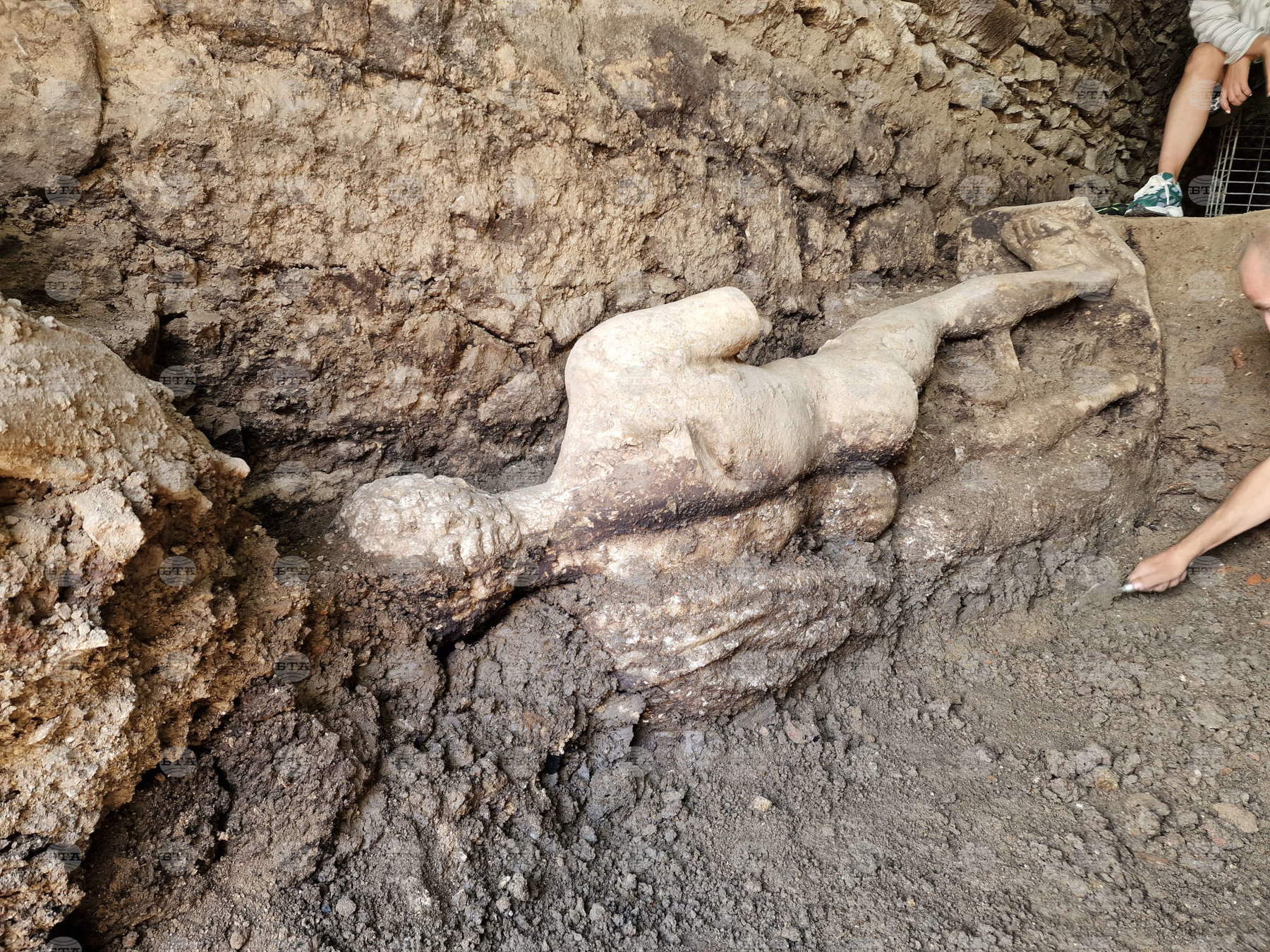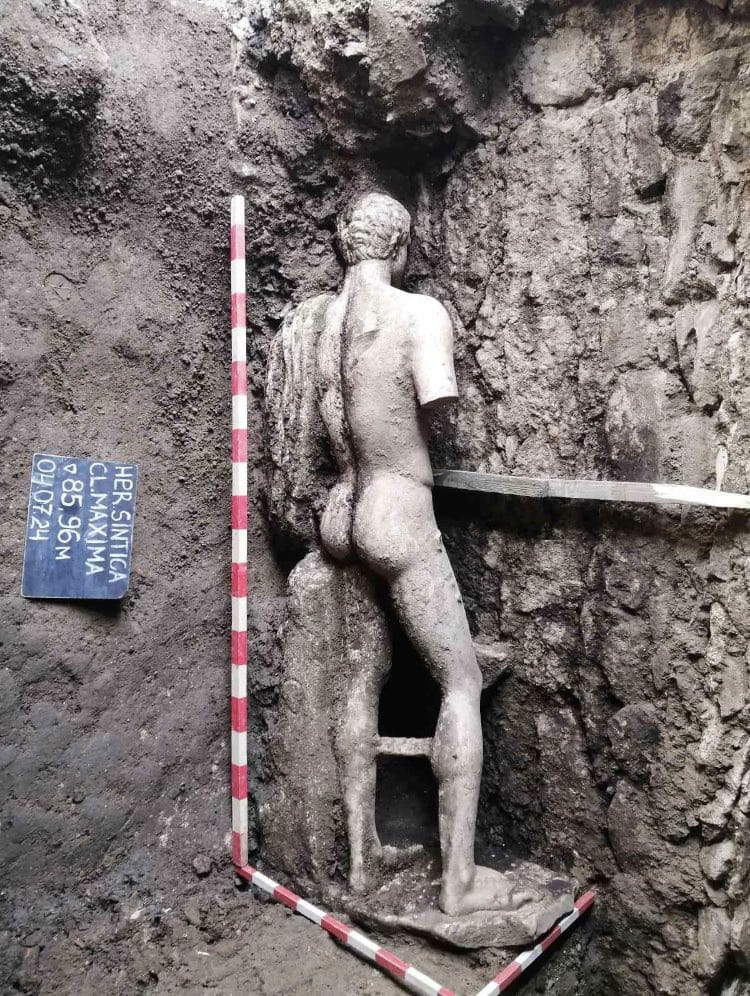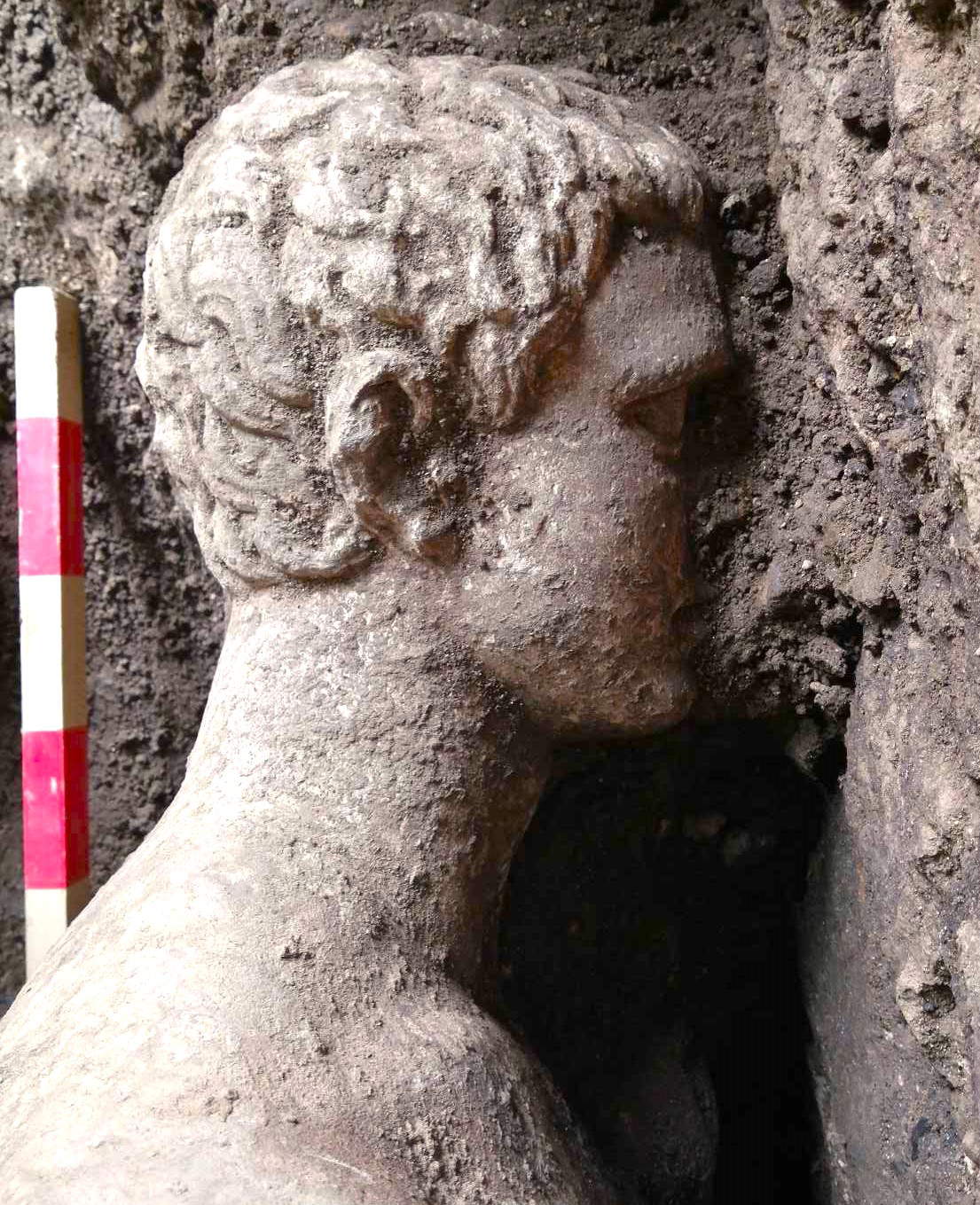Bulgaria, important statue of Hermes from Roman times discovered
Outstanding discovery in Bulgaria: a Roman statue over two meters tall in perfect condition depicting the god Hermes was found during routine excavations in the remains of the ancient city of Heraclea Sintica in Bulgarian Macedonia on the border with Greece. The discovery was made by a team of archaeologists led by Professor Lyudmil Vagalinski, president of the ’Archaeologia Bulgarica’ association who was director of the National Archaeological Institute at the Bulgarian Academy of Sciences from 2011 to 2018, and who has been overseeing archaeological research at this site, located in the municipality of Petrich in Rupite, for more than 15 years. And it is in the Petrich Museum of History that the important statue, the best specimen found in Bulgaria, will find a home, which is about to be extracted from the ground where it is located: the ancient cloaca maxima of the city.
Heraclea Sintica was founded by Philip II of Macedon between 356 and 339 B.C. in the Pirin Macedonia region of southwestern Bulgaria. An earthquake largely destroyed the city, causing the collapse of the civic basilica and most of the main infrastructure. Following the disaster, the city went into rapid decline and was largely abandoned around 500 AD.
The ruins were identified as Heraclea Sintica in 2002 after the discovery of a Latin inscription documenting correspondence between Emperor Galerius and Caesar Maximinus II.
“It is more than two meters and probably depicts Hermes, one of the most popular deities in this area,” commented Lyudmil Vagalinski on Facebook. “We still have a lot of work to do and I don’t want to rush to conclusions, but I can say that this ancient statue is not only the best preserved among the discoveries here, but also on the territory of Bulgaria in general. I suppose the former inhabitants of the city buried the statue down here after the great earthquake of the 4th century to better preserve one of their old deities at a time when Christianity was already the official religion.”
The statue unlike others retains the head on its neck, this suggests that it was purposely buried by pagans for the purpose of preserving it from destruction after the abandonment of paganism as the state religion.
It is in excellent condition and a single block of marble probably from the second century was used, and based on parallels it is considered to depict of the god Hermes, a deity and herald of the gods in the ancient Greek pantheon. In the Roman pantheon, Mercury.
The statue is lying on its left side where a draped cloak, the chlamys, and a tree trunk next to the leg are carved on the shoulder by the author. These details, including the posture, recall the Atalante Hermes found in central Greece, a second-century copy of a fourth-century B.C.E. original believed to have been created by Lysippus, one of the three greatest sculptors of classical Greece. The Atalante Hermes lacks the caduceus, but there is a high probability that it is also found at this site.



 |
| Bulgaria, important statue of Hermes from Roman times discovered |
Warning: the translation into English of the original Italian article was created using automatic tools. We undertake to review all articles, but we do not guarantee the total absence of inaccuracies in the translation due to the program. You can find the original by clicking on the ITA button. If you find any mistake,please contact us.





























